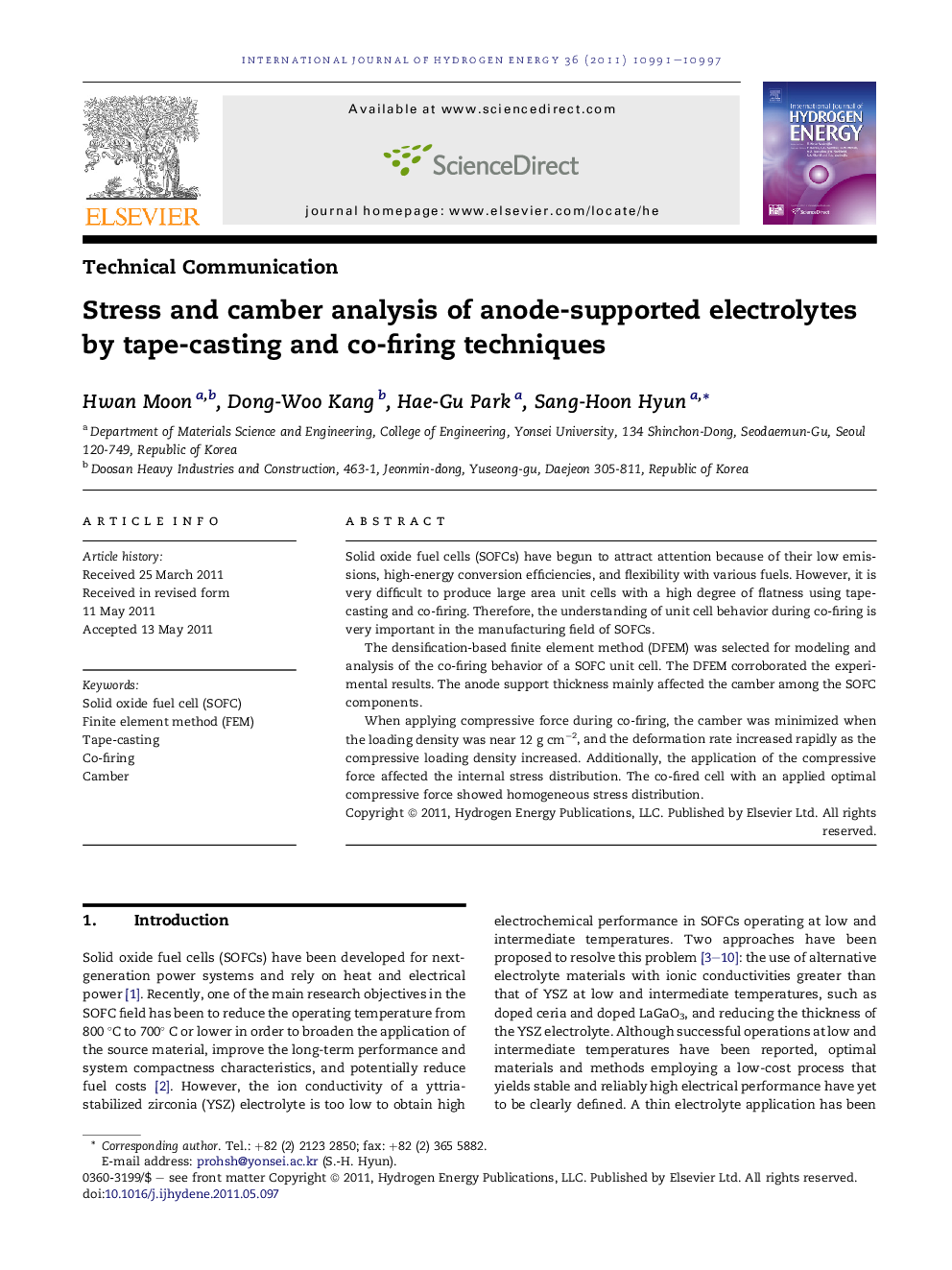| Article ID | Journal | Published Year | Pages | File Type |
|---|---|---|---|---|
| 1277569 | International Journal of Hydrogen Energy | 2011 | 7 Pages |
Solid oxide fuel cells (SOFCs) have begun to attract attention because of their low emissions, high-energy conversion efficiencies, and flexibility with various fuels. However, it is very difficult to produce large area unit cells with a high degree of flatness using tape-casting and co-firing. Therefore, the understanding of unit cell behavior during co-firing is very important in the manufacturing field of SOFCs.The densification-based finite element method (DFEM) was selected for modeling and analysis of the co-firing behavior of a SOFC unit cell. The DFEM corroborated the experimental results. The anode support thickness mainly affected the camber among the SOFC components.When applying compressive force during co-firing, the camber was minimized when the loading density was near 12 g cm−2, and the deformation rate increased rapidly as the compressive loading density increased. Additionally, the application of the compressive force affected the internal stress distribution. The co-fired cell with an applied optimal compressive force showed homogeneous stress distribution.
► Simulation and modeling of co-firing behavior of SOFC unit cell by DFEM model. ► Analysis of compressive force effects on the stress and camber distribution. ► Minimized camber and homogeneous stress distribution at 12gcm−1 of loading density.
